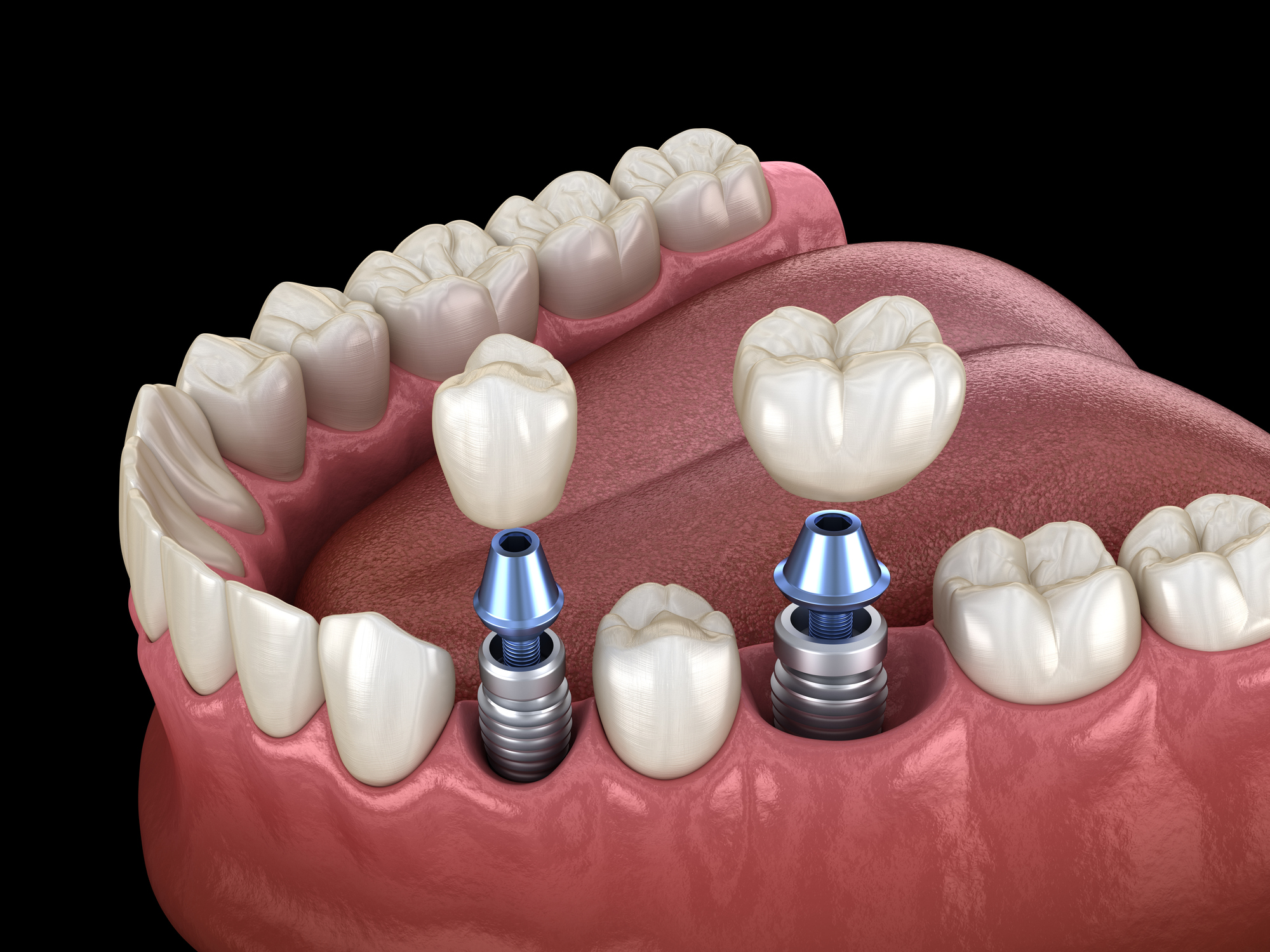5 Simple Techniques For Dental Sense
5 Simple Techniques For Dental Sense
Blog Article
Getting The Dental Sense To Work
Table of ContentsA Biased View of Dental SenseEverything about Dental SenseSee This Report about Dental SenseLittle Known Questions About Dental Sense.
are clinical devices surgically dental implanted right into the jaw to restore an individual's ability to eat or their appearance. They supply assistance for man-made (phony) teeth, such as crowns, bridges, or dentures. When a tooth is lost due to injury or disease, a person can experience issues such as rapid bone loss, faulty speech, or modifications to chewing patterns that cause pain.Oral dental implant systems contain a dental implant body and oral implant joint and might likewise consist of a joint addiction screw. Professional teeth whitening. The oral implant body is operatively put in the jawbone instead of the tooth's root. The oral implant joint is normally attached to the dental implant body by the joint addiction screw and prolongs through gum tissues into the mouth to support the affixed artificial teeth
(https://padlet.com/matthewmusic33101/dental-sense-ljnep063jjnbcvdg)Structure of The Dental Implant System choosing dental implants, talk to your dental service provider about the prospective benefits and threats, and whether you are a candidate for the procedure. Points to take into consideration: Your total health is a vital consider determining whether you are a good prospect for dental implants, the length of time it will take to recover, and for how long the implant might remain in location.
Smoking cigarettes might affect the healing process and reduce the long-term success of the dental implant. The recovery procedure for the implant body may take numerous months or longer, during which time you usually have a momentary abutment in area of the tooth. the dental implant treatment: Thoroughly comply with the oral health guidelines provided to you by your dental provider.
The Best Strategy To Use For Dental Sense
Implant failure can lead to the demand for one more surgical treatment to repair or replace the implant system. Restores the capability to chew Brings back aesthetic look Aids maintain the jawbone from reducing because of bone loss Protects the health and wellness of the surrounding bone and periodontals Assists keep adjacent (nearby) teeth secure Boosts high quality of life Damages to surrounding all-natural teeth during implant positioning Injury to the surrounding cells during surgery, such as sinus opening Injury during surgical treatment (for instance, crack of surrounding jawbone) Inadequate function, such as seeming like the teeth do not bite with each other typically An experience that the tooth hangs or turning in position arising from an abutment screw loosening up Implant body failure (looseness of the implant body) because of systemic infection, which might be more most likely in people with unrestrained diabetics issues as a result of neighborhood infection in bone and gum tissues sustaining the implant body due to postponed recovery, which might be most likely in individuals that smoke Difficulty cleaning the gum tissues around the implant, leading to inadequate oral health Without treatment periodontal illness Post-surgical feeling numb due to nerve impingement or damages Constantly notify health care suppliers and imaging technicians that you have dental implants prior to any type of magnetic resonance imaging (MRI) or x-ray treatments.
FDA is not knowledgeable about any type of damaging events reported for MRI or x-ray procedures with oral implants. Oral implants systems are generally made from materials that adhere to worldwide consensus requirements of the International Company for Standardization (ISO) or ASTM International. These requirements have information of what makes a secure product.

An oral implant is a framework that replaces a missing out on tooth. With screw-like devices, the surgeon inserts an implant into the jawbone, and it acts as an anchor for a fabricated tooth, called a crown.
Not known Details About Dental Sense
Some people are not eligible for dental implant surgical treatment. It is for dental surgeons to operate people with: severe illnessuncontrollable metabolic diseasebone or soft tissue condition or infectionIf these issues are fixed, a person can have the surgical treatment. In, oral surgeons abstain from operating people with: If people with any one of the above undergo dental implant surgical treatment, there is a higher threat of the implant failing.

Oral dental implant surgical treatment is a tailored process. It's not the exact same for everybody. But the following gives a general overview of what you can anticipate your dental professional, oral doctor, periodontist or prosthodontist to do: Place the implant operatively. Provide you time to recover. Connect the message and final crown, bridge or denture.
Next off, your specialist will carefully position the oral implant into your jaw. If your dental implant is near the front of your mouth, your dental practitioner will make a short-term tooth for you to put on up until you heal.
The Basic Principles Of Dental Sense
During the healing phase, your jawbone needs to fuse to the oral implant. This process can take anywhere from 3 to 9 months.
Once your dental implant heals, your dental expert can affix the abutment (tiny connector message) and your final reconstruction (crown, bridge or denture). This normally takes regarding one hour to finish and may call for More hints a second minor surgery. You shouldn't feel any pain during your oral implant procedure because your company will utilize drug to numb your periodontals.
Report this page